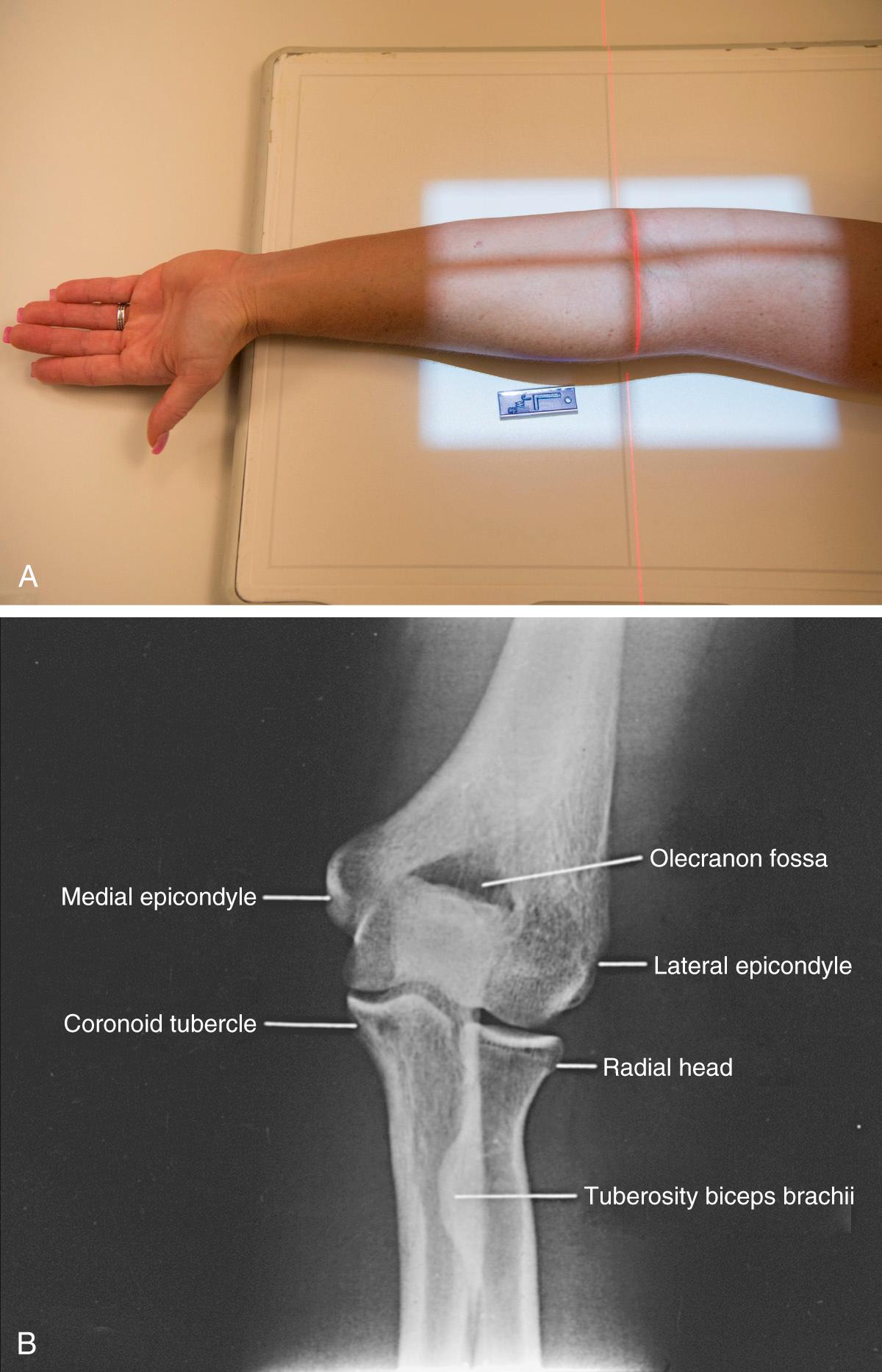Physical Address
304 North Cardinal St.
Dorchester Center, MA 02124
Plain-film radiography remains standard in the evaluation of the elbow. A radiographic series, including anteroposterior (AP), oblique, and lateral projections, provides valuable information about the bone, joints, and soft tissues. They are a mainstay for fracture evaluation and often guide the subsequent acquisition and interpretation of advanced imaging. Advanced imaging is often reliant on plain radiographs for accurate interpretation.
This chapter discusses the techniques and uses of plain-film radiographs in evaluation of the elbow.
Computed radiography (CR) and digital radiography (DR) have supplanted conventional screen-film radiography. Despite this change, the basic principles of quality image acquisition (e.g., patient positioning, field-of-view, beam orientation, etc.) remain the same. For elbow images, we routinely use a 48-inch target-to-detector distance with 60 kV and 2.5 mAs. Reusable CR or DR detectors are employed with the field-of-view collimated to 10 × 12 inches.
A minimum of two projections is necessary for evaluation of the elbow. These include AP and lateral views, which are taken at 90-degree angles. In trauma patients, we routinely obtain oblique views.
With the AP view, the x-ray beam enters the patient anteriorly before passing to the detector placed posterior to the patient. The patient is placed adjacent to the radiographic table in a sitting position (or supine, if necessary), with the elbow extended. The patient should be positioned so that the shoulder, humerus, and elbow are in the same plane. The hand should be supinated and the beam centered perpendicular to the elbow ( Fig. 6.1A ). If the patient cannot fully extend the elbow, AP images of the distal humerus and the proximal forearm should be obtained separately. The AP view displays the medial and lateral epicondyles, the trochlea, and the capitellum. The radiocapitellar articular surface and some of the olecranon fossa are also demonstrated. This view lays out the normal elbow carrying angle of 5 to 15 degrees (see Fig. 6.1B ).

Become a Clinical Tree membership for Full access and enjoy Unlimited articles
If you are a member. Log in here